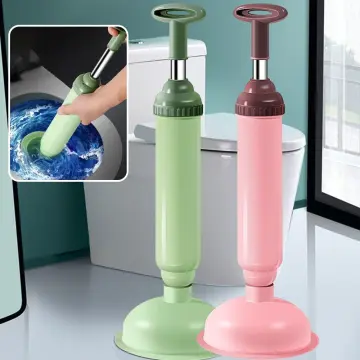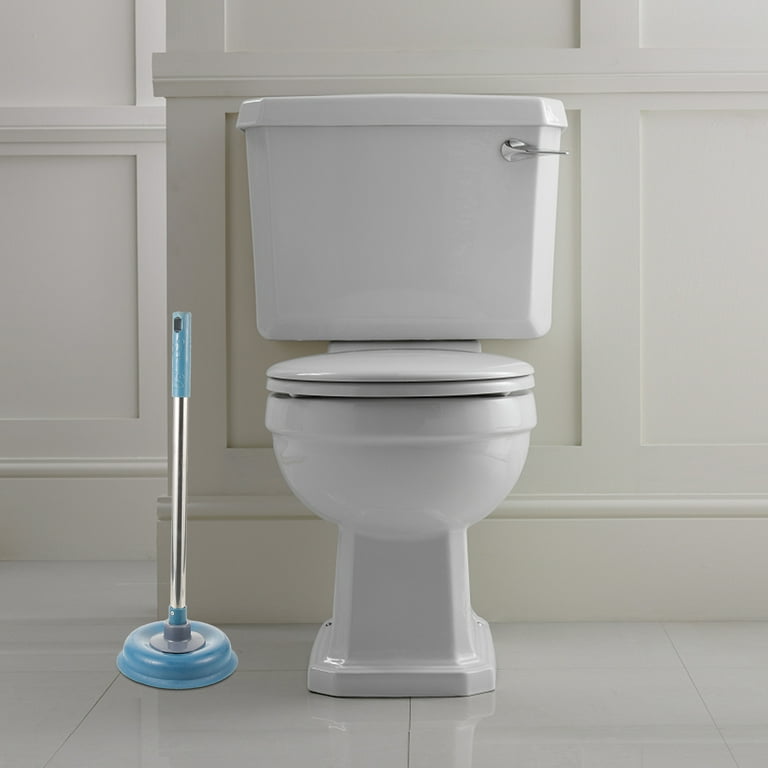Just how do you actually feel in regards to A Guide to Plungers (and How to Use Them)?

Intro
Proper maintenance of household drains pipes is important for protecting against blockages and ensuring smooth water flow. One of the secret tools in every house owner's toolkit is the bettor, together with different drainpipe cleaners developed to tackle stubborn obstructions properly. This write-up checks out exactly how to use bettors and drainpipe cleaners effectively to maintain your drains moving easily.
Section 1: Understanding Bettors
Kinds of Plungers
There are several sorts of plungers readily available, each developed for various kinds of drains pipes and clogs. One of the most usual types consist of cup plungers, flange bettors, and accordion bettors.
Exactly How Plungers Job
Bettors deal with the concept of developing pressure and suction to dislodge blockages. When effectively applied over a drain, they produce a vacuum cleaner that can take out debris or separate clogs.
Picking the Right Bettor
Selecting the right plunger depends upon the kind of drainpipe and the nature of the blockage. Cup plungers are suitable for sinks and bathtubs, while flange bettors are better fit for toilets due to their layout.
Usual Blunders with Bettors
Preventing these blunders makes certain reliable plunging: incorrect seal around the drain, insufficient pressure, and not clearing surrounding particles.
Section 2: Making Use Of Plungers Efficiently
Preparation
Prior to plunging, make sure the plunger covers the drainpipe completely and creates a tight seal. Clear any kind of visible particles around the drainpipe opening.
Method
Beginning with gentle plunging activities to build suction. Boost stress gradually, utilizing a constant rhythm. Repeat as necessary up until the drainpipe gets rid of.
Troubleshooting Tips
If plunging doesn't function, attempt readjusting the seal, applying petroleum jelly for a much better seal, or utilizing a various sort of bettor.
Area 3: Comprehending Drainpipe Cleaners
Kinds Of Drain Cleaning Company
Drain pipes cleansers can be chemical or chemical. Chemical cleansers utilize solid chemicals to liquify blockages, while enzymatic cleaners use all-natural enzymes to break down raw material.
Exactly How Drain Cleaners Job
Chemical cleansers react with clogs to liquify them, while chemical cleaners break down natural materials like hair and oil without damaging pipes.
Safety Factors to consider
Always put on gloves and eye protection when utilizing chemical drainpipe cleaners. Ensure ample ventilation and adhere to manufacturer guidelines thoroughly.
Eco-Friendly Alternatives
Take into consideration using vinegar and cooking soft drink or enzyme-based cleaners for green options that are safer for pipes and the atmosphere.
Area 4: Making Use Of Drain Cleaners Efficiently
Application Methods
Put chemical cleansers straight into the drain opening. Enable them to help the suggested time before flushing with hot water. Enzymatic cleansers need to rest over night.
Preventative measures
Prevent blending various types of cleansers, as this can generate harmful fumes. Never use chemical cleansers combined with a bettor, as splashing can occur.
Handling Persistent Blockages
For persistent obstructions, think about using a pipes snake or calling a specialist plumbing technician to prevent damages to pipes.
Final thought
In conclusion, comprehending how to utilize bettors and drainpipe cleaners successfully is important for keeping healthy plumbing systems. By selecting the right devices and strategies, homeowners can deal with minor blockages and stop significant pipes issues down the line.
How to Use a Plunger to Unclog a Drain
The humble plunger is a simple yet effective tool for breaking clogs in sinks, tubs and toilets. This handy tool is easy to use. You can make the most of its power if you understand how it works. Ready to dive in? Here’s what you need to know.
Safety First!
Never use a plunger with drain chemicals. Water will splash as you work, and the chemicals can spatter, burning skin and eyes. It’s a good idea to use rubber gloves and wear safety goggles when you work on a clog.
Choose the Right Tool for the Job
Plungers come in two different styles. Sinks, bathtubs and showers require a cup plunger. Like its name suggests, the rubber end is shaped like a cup. Use a flange plunger on toilets. These plungers have a rubber funnel extending from the cup. A plunger needs to be big enough to cover the drain.
Ready, Set, Plunge!
Coat the rim: Coat the plunger rim with petroleum jelly. This helps make a better seal.
Block outlets: Hold a wet rag over nearby outlets such as the overflow vent or the drain in a second sink.
Release air: Insert the plunger at an angle into the water. Water will displace air in the cup. A water-filled cup is more forceful than one filled with air.
Keep the plunger upright: Hold the plunger perpendicular to the drain. Use fast, forceful strokes, but make the first stroke gentle. The first stroke can create a splash if the cup still contains air. Thrust the plunger 15 to 20 times.
Snap off the plunger: The final stroke should be a strong upward motion that ends when the plunger snaps off the drain.
Repeat the process: you may need to repeat this sequence several times. When the water drains away, your work is done. High-five! https://plumbernw.com/blog/how-to-use-a-plunger-to-unclog-a-drain/

Application Methods
Put chemical cleansers straight into the drain opening. Enable them to help the suggested time before flushing with hot water. Enzymatic cleansers need to rest over night.
Preventative measures
Prevent blending various types of cleansers, as this can generate harmful fumes. Never use chemical cleansers combined with a bettor, as splashing can occur.
Handling Persistent Blockages
For persistent obstructions, think about using a pipes snake or calling a specialist plumbing technician to prevent damages to pipes.
Final thought
In conclusion, comprehending how to utilize bettors and drainpipe cleaners successfully is important for keeping healthy plumbing systems. By selecting the right devices and strategies, homeowners can deal with minor blockages and stop significant pipes issues down the line.
How to Use a Plunger to Unclog a Drain
The humble plunger is a simple yet effective tool for breaking clogs in sinks, tubs and toilets. This handy tool is easy to use. You can make the most of its power if you understand how it works. Ready to dive in? Here’s what you need to know.
Safety First!
Never use a plunger with drain chemicals. Water will splash as you work, and the chemicals can spatter, burning skin and eyes. It’s a good idea to use rubber gloves and wear safety goggles when you work on a clog.
Choose the Right Tool for the Job
Plungers come in two different styles. Sinks, bathtubs and showers require a cup plunger. Like its name suggests, the rubber end is shaped like a cup. Use a flange plunger on toilets. These plungers have a rubber funnel extending from the cup. A plunger needs to be big enough to cover the drain.
Ready, Set, Plunge!
Coat the rim: Coat the plunger rim with petroleum jelly. This helps make a better seal. Block outlets: Hold a wet rag over nearby outlets such as the overflow vent or the drain in a second sink. Release air: Insert the plunger at an angle into the water. Water will displace air in the cup. A water-filled cup is more forceful than one filled with air. Keep the plunger upright: Hold the plunger perpendicular to the drain. Use fast, forceful strokes, but make the first stroke gentle. The first stroke can create a splash if the cup still contains air. Thrust the plunger 15 to 20 times. Snap off the plunger: The final stroke should be a strong upward motion that ends when the plunger snaps off the drain. Repeat the process: you may need to repeat this sequence several times. When the water drains away, your work is done. High-five! https://plumbernw.com/blog/how-to-use-a-plunger-to-unclog-a-drain/

Do you appreciate more info about How To Use Your Toilet Plunger Correctly in 5 Easy Steps? Leave a remark directly below. We would be delighted to know your responses about this blog post. Hoping that you visit us again later on. Sharing is nice. You never know, you may very well be helping someone out. I am grateful for being here. Revisit us soon.
Go Deal Now